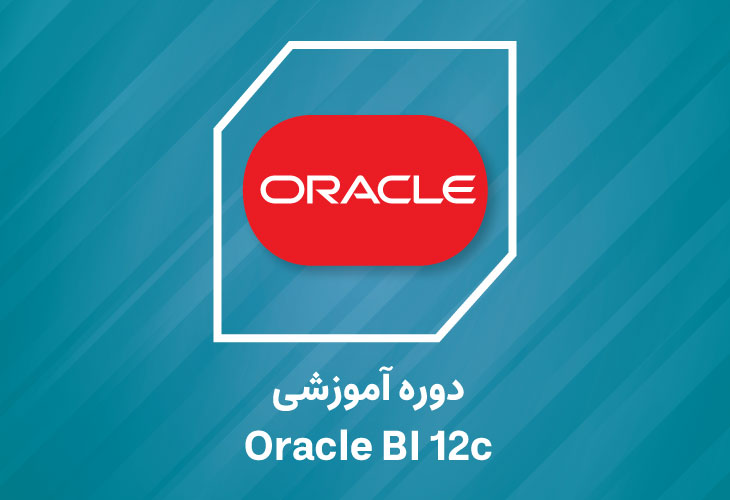- تاریخ برگزاری: 1403/02/28
- مدت زمان دوره: 40 ساعت
- روزهای برگزاری: جمعه
- ساعات برگزاری: 8 الی 12
- نام استاد: سولماز کریمی
- قیمت: تومان
- هزینه دوره مجازی:
- تماس: 02166013455

این دوره برای افرادی در نظر گرفته شده که تمایل به پیاده سازی و توسعه هوش تجاری اوراکل در سازمان را دارند. بهتر است، دانشجویانی که تمایل به شرکت در این دوره را دارند، به صورت مقدماتی با بانک اطلاعاتی، آشنایی داشته باشند
در این دوره دانشجویان با نحوه نصب، ایجادReports KPIs,، Dashboards، Analysis، گزارشات مبتنی بر موبایل، Map و مصورسازی جغرافیایی، شخصی سازی گزارشات و اعمال دسترسی های لازم بر روی subjectها، ایجاد و مدیریتrepository آشنا خواهند شد.
قابل ذکر است این دوره تلفیقی از دوره های Data Warehousing Fundamentals
، Crate Analyses And Dashboards، Build Repositories اوراکل است.
♦ کارشناسان و توسعه دهندگان هوش تجاری
♦ آشنایی با مفاهیم، پیاده سازی، توسعه و پشتیبانی هوش تجاری در سازمان
Concepts of Business Intelligence and Data Warehouse
Installation
Introduction to Oracle Business Intelligenc
Enterprise Edition
• Introduction to Oracle BI EE
• Oracle BI 12c Highlights
• Oracle BI 12c Architecture
Working with Oracle Business Intelligence Analyses
• Adding basic formatting
• Working with analyses in Oracle BI
• Introduction to Oracle BI Analysis Editor
• Setting analysis properties
• Oracle BI column types
• Using advanced formatting
Filtering Data for Analyses
• Adding prompts to analyses
• Using saved analyses as filters
• Dynamic filtering
• Creating, editing, and grouping filters
• Introduction to filters and selections
Selecting and Grouping Data for Analysis
• Creating calculated items
• Including advanced SQL clauses in your analysis
• Creating selection steps
• Creating direct database analysis requests
• Creating groups
Advance Visualization in Analysis
• Working with views in Compound Layouts
• Performing common view tasks
• Introduction to views, graphs, and editors
• Creating and editing graphs
Showing Results with Pivot Tables
• Using hierarchical columns
• Building calculations and displaying running sums
• Showing an item's relative value
• Creating, arranging, and formatting a pivot table
• Setting aggregation and using totals
• Sorting in pivot tables
Working with Additional Views in Analyses
• Creating simple and advanced trellis views
• Creating performance tile views
• Linking master-detail views
• Working other view types like Treemap and Heat Matrix
Visualizing Data on Maps
• Oracle spatial components
• Managing map data
• Other applications and points of integration for map views
• Interacting with map views
• Creating and editing Map views
Creating Oracle Business Intelligence Dashboards
• Publishing dashboard pages
• Using the Dashboard Builder
• Exploring dashboard object properties and options
• Creating and editing dashboards
• Creating personal customizations and using other page options
Configuring Oracle Business Intelligence Dashboards
• Embedding content in dashboards
• Exploring types of dashboard content
Creating Dashboard Prompts and Variables
• Adding variable prompts to a dashboard
• Creating additional prompt page and setting page preferences
• Adding a named dashboard prompt to a dashboard
• Understanding variables
• Adding a hidden named dashboard prompt to a dashboard
Scorecards and Key Performance Indicators
• Editing scorecards and KPIs
• Objects and components of Oracle Scorecard and Strategy Management
• Creating scorecard documents
• Scorecard document types
• Creating scorecards and KPIs
• Key Performance Indicator (KPI) overview
Working with BI Content in Smart View
• Creating and publishing views using the View Designer
• Inserting BI views in to Smart View clients
• Working with Views in Smart View Clients
• Customizing BI data in MS Office
Oracle Business Intelligence Mobile
• Navigating the Oracle BI mobile application
• Oracle BI Mobile Security Toolkit
• Downloading and using the Oracle BI mobile application
• Working with BI content
• Working with favorites and local content
Administering the Presentation Catalog
• Working with Oracle BI Briefing Books
• Setting object permissions
• Setting system privileges
• Managing security using roles
• Oracle BI and catalog security overview
• Understanding security inheritance
• Archiving catalog items
Direct Database Analysis
• Creating and Executing a Direct Database Analysis
• Changing Direct Database Analysis Privileges
• Direct Database Analysis Overview
Repository Basics
• Loading a repository into Oracle BI Server
• Exploring a repository's structure, features, and functions
• Exploring Oracle BI architecture components
• Using the Oracle BI Administration Tool
• Creating a repository
• Installing the BI Client software
Building the Physical Layer of a Repository
• Examining physical layer object properties
• Importing data sources
• Setting up Connection Pool properties
• Defining keys and joins
Building the Business Model and Mapping Layer of a Repository
• Building logical tables, columns, and sources
• Building a business model
• Building measures
• Examining business model object properties
• Defining logical joins
Building the Presentation Layer of a Repository
• Exploring presentation layer objects
• Modifying presentation layer objects
• Examining presentation layer object properties
• Creating presentation layer objects
Testing and Validating a Repository
• Executing analyses to test the repository
• Uploading the repository through Enterprise Manager
• Checking repository consistency
Adding Calculations to a Fact
• Creating new calculation measures based on physical columns
• Creating measures using functions
• Creating new calculation measures using the Calculation Wizard
Working with Logical Dimensions
• Creating logical dimension hierarchies
Security
• Setting up object permissions
• Creating users and groups
• Exploring Oracle BI default security settings
• Creating application roles